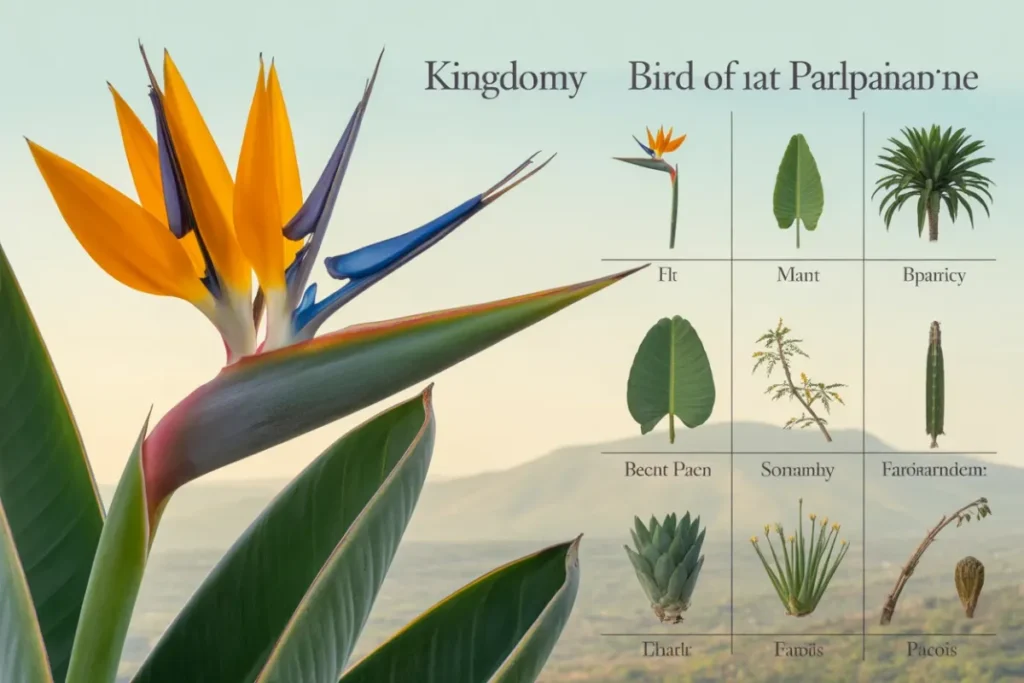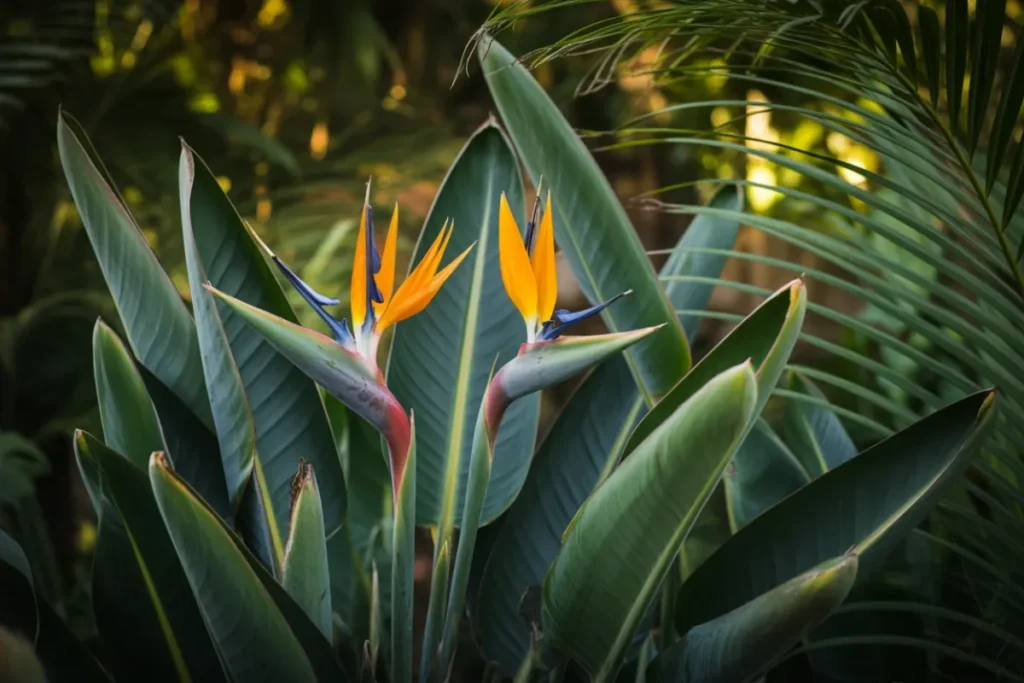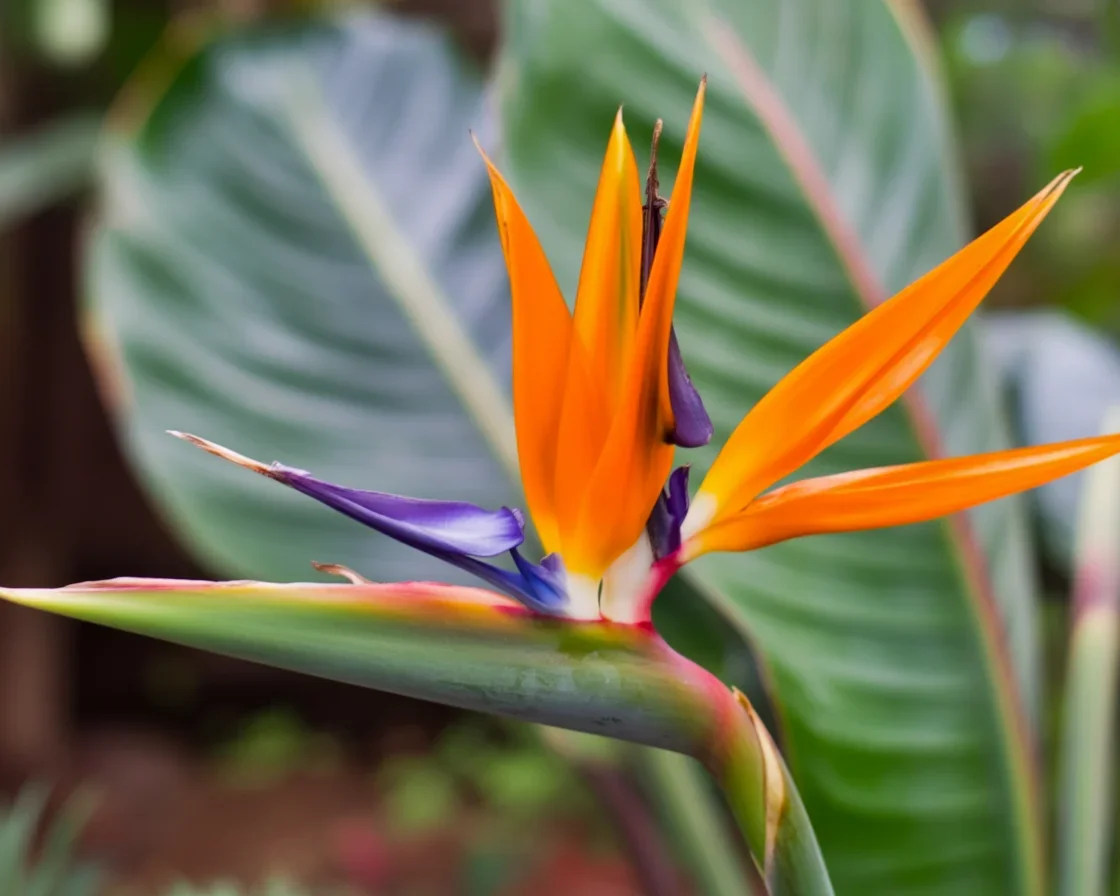Table of Contents
Bird of paradise is one of those plants you walk by and—boom—it just stops you. Like, you freeze right up. And if you’re anything like me, you wonder… how in the world do people get something so wild and exotic to grow right at home? Guess what? It’s not some secret club—you can totally do it yourself. Trust me, when you finally see your own Bird of paradise flower pop—whoa, instant five-star restaurant vibes in your living room. Oh, and if you’re curious about similar plants, check out my post on how to bring tropical flair into your space.

Taxonomy
Let’s set the record straight on this bird—not a bird, it’s a plant. (I know! The name throws you.)
- Real name’s Strelitzia, which sounds like some fairy-tale character, but no, just botany talk.
- Part of the Strelitziaceae family—try to say that fast, just for fun.
- Related to bananas, believe it or not. About as likely as a moose being a cousin to a goldfish, but it’s true.
The first time I learned Strelitzia wasn’t actually a bird, my mind was blown. It’s totally wild how nature fakes you out like that. —Maribel P.

Description
So here’s what makes Bird of paradise a total show-off:
- Bright orange and blue flowers—like, so bright you almost need sunglasses.
- Leaf shape? Big, thick, banana-style (not edible though—hey, don’t eat them!).
- When it blooms, it literally looks like a bird’s head popping up. Always a crowd-pleaser at family gatherings.
Distribution and habitat
Where do you find these beauties in the wild? Well:
- Original home is South Africa—yep, where the animals do that “Circle of Life” thing.
- Loves subtropical and tropical climates, basically anywhere that isn’t freezing its leaves off.
- Some folks baby them outdoors, but honestly—they’re popular as houseplants everywhere now.
Biology and propagation
Now for the real stuff—how does Bird of paradise do its thing?
- Grows slowly. Like, turtle-on-a-Sunday slow. (Patience, grasshopper!)
- Usually flowers after a few years, so don’t panic if you don’t see anything the first season.
- You can grow from seed or divide an old plant. Personally, division is way easier. Seeds? Like waiting for a package that never arrives.
Relationship with humans
We’re obsessed with these plants for good reasons.
- They brighten up spaces—homes, hotels, you name it.
- In South African culture, they even call this the “crane flower”.
- Not just a pretty face—air purifying, too. Your lungs will thank you.
FAQ
How long does it take for Bird of paradise to flower?
Usually 3-5 years. Yep, it takes a while… think of it as “plant delayed gratification therapy.”
Can Bird of paradise survive indoors?
100%. Just give it bright, indirect light, and some love. They’re drama queens about the cold, though.
How big do they get?
In pots, about 3-4 feet. Outdoors? Up to 6 feet! (Tall enough to photobomb your selfies.)
Do they need much water?
Sort of Goldilocks—keep soil moist, but not swampy. Let it dry a smidge between waterings.
Is Bird of paradise toxic to pets?
Yeah, keep it out of chomp range—leaves can make pets sick if they snack on them.
Ready to Try Your Own Jungle at Home?
There you go—Bird of paradise really isn’t as mysterious as it looks. If you give it the basics—good light, water, and some patience—it’ll reward you big time. Honestly, it’s worth every minute, and the bloom is just… wow. If you’re hungry for more plant info, check out Bird-of-paradise – Wikipedia or swing by Bird-of-paradise (Plant) | San Diego Zoo Animals & Plants for some cool stories. Oh, and for true plant nerds, Strelitzia – Wikipedia is a great rabbit hole. Give it a go—and send me your first bloom pics. I promise, you’ll be hooked.

